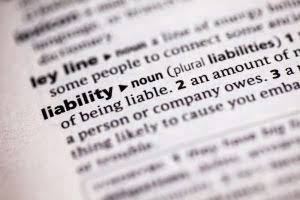Weighted Average Shares Outstanding Formula + Calculator

The number of outstanding shares is calculated by subtracting treasury stock from the shares issued. Generally, you won’t need to calculate this number yourself and it will be listed for you on a company’s 10-Q or 10-K filing. Using the SUMPRODUCT function, we’ll calculate the weighted average shares outstanding over fiscal year 2021, which comes out to 448,265.
How is earnings per share calculated?
- The reason for that is that most public companies have instruments that provide for shares to be issued in the future.
- Most blue-chip stocks have an increased number of these shares due to multiple shares splits over their long operational history.
- Most notably, short interest usually is measured as a percentage of the float, rather than shares outstanding.
- Several factors can cause a company’s number of outstanding shares to rise or fall, with one of the most common being stock splits.
- The last part of an income statement is net income or net profit, which is calculated by subtracting all expenses from gross profit margin.
- If a firm goes bankrupt due to bankruptcy, common stockholders receive nothing.
The number of common shares outstanding at the beginning of the period was 160 million. Thus, we use the weighted average common shares to account for this how to calculate outstanding shares from income statement time difference. From there, scroll down until you find the section in the 10-Q or 10-K called “Capital Stock.” All the details you need will be there.
Payment of Dividend on Preference Shares
First, the board of directors authorizes the company to issue a certain number of shares. The company hasn’t taken action yet; it’s just gotten approval to take action and sell some shares if it chooses to. As an example, let’s say that a fictional business, the Helpful Fool Company, has authorized 5,000 shares.

Earnings Per Share (EPS)

At the end of a quarter or fiscal year, a company’s earnings are what remain of its revenue after all costs have been subtracted. Someone on our team will connect you with a financial professional in our network holding https://www.bookstime.com/articles/solvency-vs-liquidity the correct designation and expertise. Our mission is to empower readers with the most factual and reliable financial information possible to help them make informed decisions for their individual needs.
What is Basic EPS?
We’ll now move on to a modeling exercise, which you can access by filling out the form below. Authorized shares, meanwhile, are the maximum number of shares a company can issue, based on its corporate charter. This is due to a multitude of factors, like the firm issuing new shares, repurchasing shares, or retiring shares that already exist. Whatever method you use to gather this information will always be readily available online or easy to calculate, allowing for better investment decisions.
- So, you can add up the monthly operating cash flow for the year to get her annual cash flow.
- Note that the latest information on the number of shares outstanding is nearly 2 months after the balance sheet date.
- For example, Barney’s total current liabilities are $1,000 at the beginning of March and $900 at the end.
- Basic shares outstanding can be sourced from multiple places in a company’s financial statements.
- It can be calculated using different methodologies, which is important to keep in mind when comparing companies across industries.

Ariel Courage is an experienced editor, researcher, and former fact-checker. She has performed editing and fact-checking work for several leading finance publications, including The Motley Fool and Passport to Wall Street. Yarilet Perez is an experienced multimedia journalist and fact-checker with a Master of Science in Journalism. She has worked in multiple cities covering breaking news, politics, education, and more. Public companies are required to report both Basic and Diluted Shares, which they use in their calculation of Earnings Per Share (EPS).
Shares Outstanding vs. Treasury Shares
It measures your liquidity to determine how easily your current assets can be converted to cash to cover your short-term liabilities. Assets can include cash, accounts receivable, equipment, inventory, or investments. Liabilities include accounts payable, accrued expenses, and long-term debt such as mortgages and other loans.

